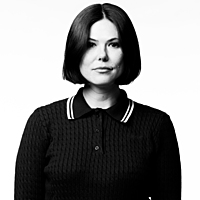Why ASX mid-caps deserve a bigger slice of your equity portfolio
Please note, this interview was filmed Tuesday 21 October, 2025.
Livewire content has abounded with gleeful stories of small-cap performance over the last couple of months.
But there’s a quiet achiever that’s rallied with plenty of opportunities and stronger returns than both the small and large ends of the spectrum.
I’m talking about mid-caps. They may be mid by name, but not by nature.
I sat down with Jordan Woods of Paradice Investment Management to discuss why this part of the market deserves more attention and what opportunities investors can add to their portfolios right now.
The case for mid-caps
While small caps have been stealing headlines, mid-caps have quietly delivered superior returns for decades.
“If you were to look at the ASX 300 and break it into three segments — the top 50, the MidCap 50, and the small ordinaries — the mid-caps have actually been the strongest returning part of the market,” Woods says.
Paradice analysed the median holding returns for each segment over the last 25 years and found that: “If you held the ASX small ords for exactly three years, the median return was 5.8%. For the ASX 50 it was 8.5%. But for the MidCap 50, the median three-year return was 11.8%,” he explains.
And it’s not just a short-term phenomenon. “If you increase that holding period to five, seven, or ten years, the story stays exactly the same.”
Concentration versus diversification
One factor working in mid-caps’ favour is sector diversity.
“The top 50 is dominated by financials and materials. Nearly 40% of the top 50 is financials, and if you add in resources, it’s almost 60%,” Woods says. “That’s a really concentrated part of the market.”
By contrast, mid-caps offer much broader exposure. “The diversity of sectors is a lot more broad-based,” he adds. “If you look at the five-year total return contribution for the MidCap 50, the largest single stock contributor was WiseTech (ASX: WTC) at around 7%. That breadth is much broader compared to the ASX 50.”
This matters for investors hunting for value and resilience. “It’s becoming a big challenge for investors to find value in the top 50, which is why mid-caps are becoming a really attractive part of the market.”
The structural edge
So what drives this long-term outperformance?
“Understandably, earnings drive share prices over the long term, and that’s no different to the MidCap 50,” Woods says. “Over the last 3, 5, 7, and 10 years, mid-caps have shown the strongest EPS growth through all those timeframes.”
This structural strength comes from where mid-caps sit in the market ecosystem. “You get the best of both worlds,” he explains. “You’ve got really good small caps migrating up, and on the flip side, you’ve got turnaround stories coming down from the top 50.”
For investors, that means two key opportunities: “You’re looking for small caps that are compounding earnings and moving up, and you’re monitoring those ex-top 50 names to see if they can turn around or if they’re in structural decline.”
Valuations and outlook
After a strong run, are mid-caps still attractively priced? Woods thinks so.
“When you see strong periods of performance in small caps, not only do mid-caps keep up, they normally outperform,” he notes. “From the bottom of COVID to the top of that cycle, mid-caps were up around 130% versus small ordinaries up 105%.”
Even in the volatile years since, mid-caps have continued to outperform. “People often forget there are strong underlying fundamentals - these companies compound really strong earnings growth, which is what drives that outperformance.”
Looking ahead, Woods remains constructive: “The forward earnings growth for the MidCap 50 is around 25%. That’s still really healthy, and it’s being driven by a whole bunch of high-quality companies.”
The process behind the picks
Paradice’s process is distinctly hands-on. “We are very much bottom-up stock pickers. That’s the bread and butter of what we do,” Woods says.
The team’s investable universe spans from the ASX 51st company all the way to the 300th. “We spend a lot of time on the road,” he says. “We probably do three to four international trips a year, plus lots of domestic travel, seeing companies.”
From there, ideas are filtered through rigorous analysis. “We start with the financial model, dig deep into the fundamentals, and look for businesses that can reinvest capital at high returns and compound earnings through the cycle.”

Stock stories: ALS and SRG Global
Among the fund’s standout long-term performers is ALS (ASX: ALQ).
“It’s one of those businesses where you see strong earnings growth that continues over multiple years,” Woods says. The life sciences division provides steady, high-single-digit revenue growth, while the commodities business benefits from exploration cycles.
“As money gets raised and put into the ground, those samples end up at ALS labs for testing. The operating leverage in that business can be quite extreme,” he says. “We believe we’re about to see a really strong earnings upgrade cycle for ALS.”
Another newer addition is SRG Global (ASX: SRG), which Woods describes as a standout in the contracting space. “They’re not your typical lower-quality contractor,” he says. “A big part of their revenue base is industrial maintenance — long-dated, lower-risk work.”
He’s also encouraged by management. “The CEO said to us, ‘I don’t like speaking to investors because I’d much prefer to be out running the business.’ We love hearing things like that,” Woods says. “They’ve done a great job with bolt-on acquisitions that are 25% EPS accretive, and we think there’s more to come.”
Knowing when to step back
Paradice recently exited Breville Group (ASX: BRG) after reassessing the outlook.
“It looks like it’s going to be difficult to offset the impact of tariffs,” Woods says. “We expect high top-line growth but strong margin compression, so we think there are some short-term earnings headwinds we’d prefer to avoid.”
That said, the team remains positive on the company’s longer-term potential — a reminder that even quality names can face periods where stepping aside makes sense.
A new chapter for the strategy
Paradice’s Australian mid-cap strategy which has been running for nearly two decades will soon be available in an active ETF under the ticker name, M1DS.
“The feedback from investors has been really strong,” he says. “We’re offering it as an active ETF so investors can access it easily, and get exposure to exactly what we’ve been managing for 18 years.”
The ETF is set to launch on 5 November, with Woods and the team preparing to ring the bell and bring it to market.
More of the same ahead
Looking toward 2026, Woods expects the trends underpinning mid-caps’ success to continue.
“All of those names in our portfolio have strong bottom-up stories with their own structural tailwinds,” he says. “Whether it’s Hub24, REA, or ALS, we think these businesses will continue to compound over the next couple of years.”
“There’s definitely been more money lost sitting on the sidelines than participating in the market,” Woods says.
Mid Sized. Maximum Potential.
Over the past 10-year period, Mid Caps have outperformed both Large Caps and Small Caps. In our view the Australian Mid Caps represent the sweet spot in the Australian market — established, diversified businesses with real growth potential.
1 topic
4 stocks mentioned
.jpg)
.jpg)